#kratky
Explore tagged Tumblr posts
Text


I got a little sick and decided to draw a couple of sketches

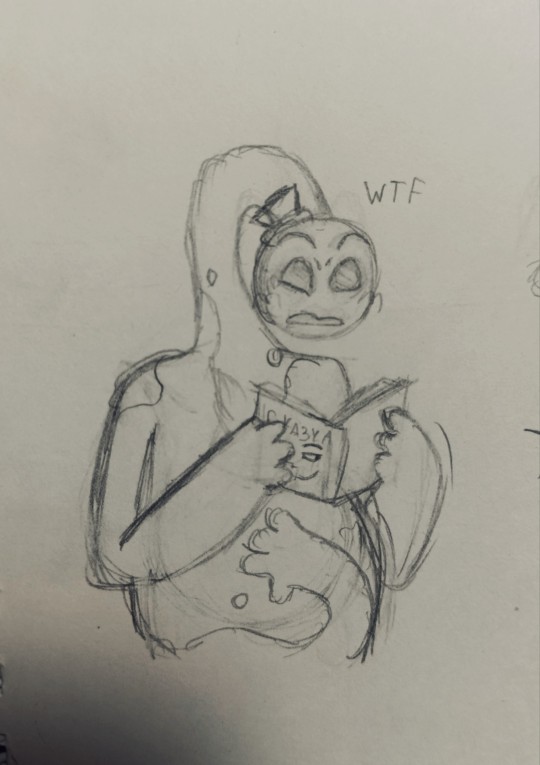
I recently found out that Cfmot was unfrozen and it inspired me to draw my favorite character (translation: "you've been trolled)
21 notes
·
View notes
Text
It occurred to me that I hadn't talked about my malabar spinach on here, or at least I don't think I did.
So, basically, I wanted to try out a kind of hydroponics called the kratky method, and I found out I liked malabar spinach, so I stripped the leaves off a few stems and put them in an aquarium that I'd picked up from a free pile, and
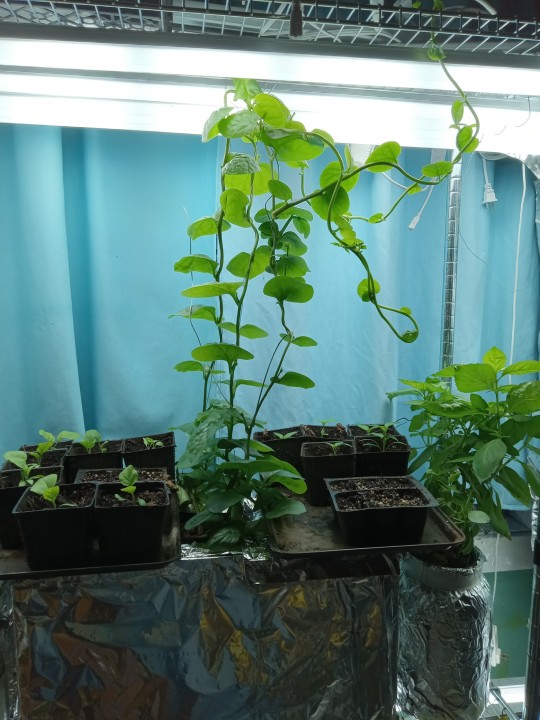
They seem to be doing pretty well! Along with the Thai basil I also started from stems. Still learning how to do it well, but it's been a fun project so far. I haven't harvested any leaves yet, and I have a feeling I should figure out a better plan for the vines than "let them dangle".
23 notes
·
View notes
Text
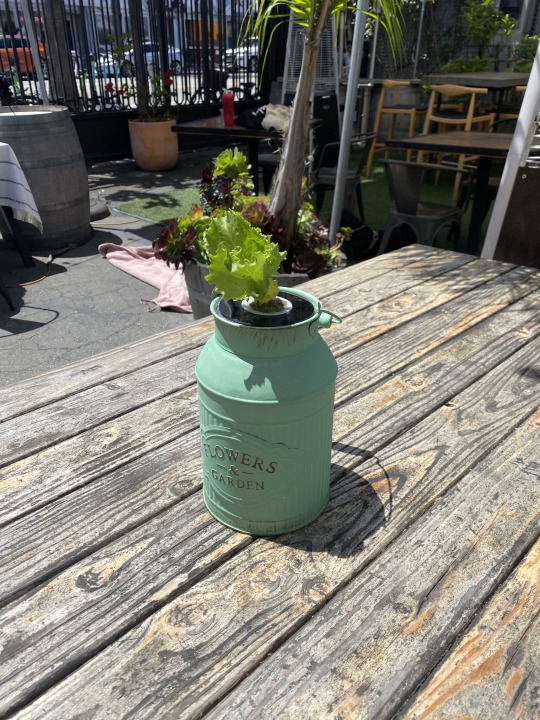
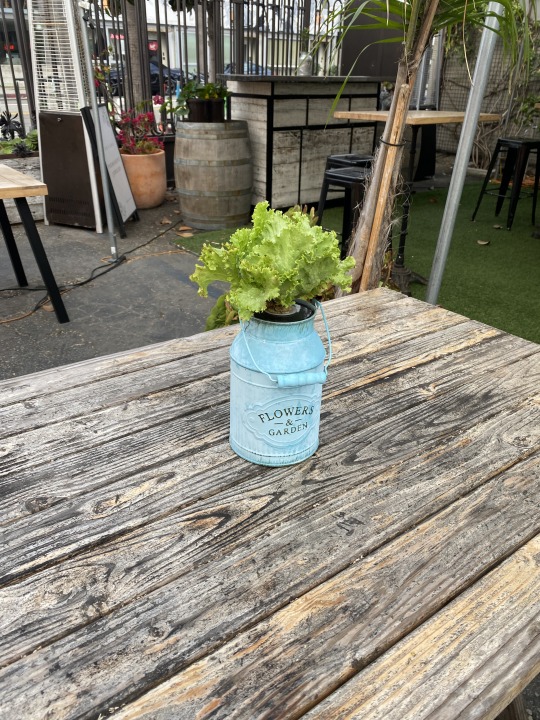

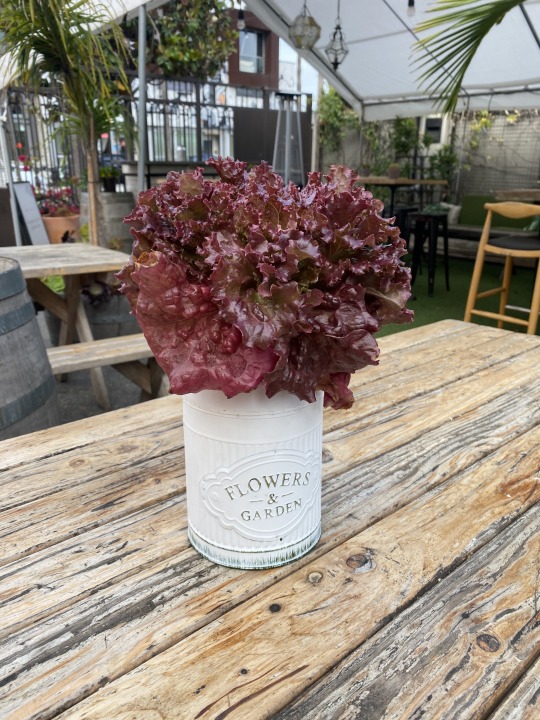





Small Container Veggies for Table Decor
Hello and welcome back to Just Facilitating Life! Today, I’m excited to share a creative and practical idea that blends my passion for gardening with my professional life as a restaurant manager.
Transforming Our Patio Space
Like many businesses, our restaurant had to adapt during the COVID-19 pandemic. One of our most significant changes was setting up a spacious and inviting outdoor patio. It looks fantastic, but I wanted to add a touch of decor that would align with our brand’s emphasis on fresh, healthy, and local food.
The Initial Idea: Flowers
My first thought was to adorn the tables with flowers. They’re beautiful and add a pleasant ambiance, but maintaining fresh flowers can be quite a task. Cut flowers would need replacing every few days, which seemed impractical.
The Epiphany: Edible Decor
Then it hit me—why not grow vegetables as table decor? It would perfectly complement our farm-to-table concept. But the challenge was to do it in small, aesthetically pleasing containers.
Experimenting with Mason Jars
Initially, I considered using mason jars for a hydroponic setup. However, mason jars require a covering to prevent algae growth in the nutrient solution, which didn’t fit the rustic look I envisioned.
The Perfect Solution: Rustic Metal Milk Containers
A stroke of luck came when I visited a 99 cent store that was closing down. I found charming rustic metal milk containers labeled "Flower and Garden." They were perfect for our decor theme, and they were on sale! I bought every single one.
Overcoming the Leaky Containers
Excitedly, I brought them home, only to find that they leaked. Not ready to give up, I inserted food saver bags inside the containers, securing them with mason jar lid rings. This improvised solution worked perfectly, making the containers watertight.
Planting the Seedlings
With my containers ready, I planted a mix of lettuce seedlings. The result was adorable table decor that grows right before your eyes. I also planted a cucumber and placed it on a shelf in our patio area. The cucumber thrived, even producing fruit! I left one on the vine a bit too long, and it started to turn yellow, but that just added to the charm.
The Kratky Method: Low Maintenance
For these setups, I used the Kratky method, a simple form of hydroponics that doesn’t require pumps or electricity. Once set up, I didn’t have to refill the nutrient solution for the entire six-week lifecycle of the lettuce. It was incredibly low maintenance.
Rotating the Crops
Today, I’m refreshing our decor by replacing the lettuce with bok choy, dwarf tomatoes, and ornamental Thai chili pepper seedlings. These new plants will not only enhance our patio’s aesthetic but also spark conversation among our guests about our commitment to fresh, local produce.
Final Thoughts
Creating these small container veggie displays has been a rewarding experience. It marries my passion for gardening with our restaurant’s ethos, providing a unique and sustainable touch to our outdoor dining space. I hope this inspires you to think creatively about how you can incorporate plants into your decor, whether at home or in your business.
Stay tuned for more gardening tips and stories from my journey. Until next time, happy growing!
10 notes
·
View notes
Text



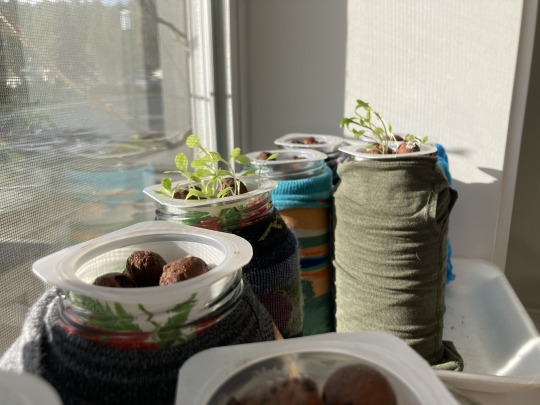
The best way to beat the January blues is to start planting.
4 notes
·
View notes
Text
Got the rooted sage set up in jars for Kratky. Nutrients in the water, pool noodle slice to hold them up, hospital socks to keep it dark. (Thanks, Mom).


They will each live either next to an Aerogarden or under a light for the duration. If they survive, eventually I'll try to transition them to soil so they can live outdoors.

0 notes
Text
0 notes
Text












The Pied Piper (1986)
#the pied piper gif#krysař gif#stop motion animation#jiří barta#czech movies#80 fantasy movies#pied piper of hamelin#german expressionism#kratky film praha#1980s#1986#gif#chronoscaph gif
3K notes
·
View notes
Text
intro post/FAQ
Who am I?
My name is Artemis or art (please note the lack of capitalization in "art;" it's intentional). I'm a trans woman living in the southwestern US, near the US-Mexico border. I've been on tumblr since (very) late 2017, I've been on HRT since August '23, and I've been trying to get into bonsai since I was a little kid but I've only gotten serious about it since... lemme check real quick.... July this year (2024). My first serious experiences with plants was helping maintain my dad's vegetable garden and the trees around the family home for a few years when I was a teenager and a couple mall bonsai that died because I didn't know what I was doing or how to learn what to do. I'm not counting the mall bonsai honestly.
What is this blog?
This is where I talk about plants! Mostly my experiments with unconventional bonsai techniques and maybe also conventional bonsai techniques. Also maybe if they actually propagate, my succulents. Also if I decide to go for it in the Spring, my vegetables.
more FAQ below the cut.
What is "bonsai?"
"Bonsai" is the romanization of the Japanese word 盆栽. Bonsai is an arboriculture technique developed in China (where it's called 盆景, romanized as "penjing") over 1300 years ago and later exported and further developed in Japan roughly 700 years ago. It has since been popularized worldwide, maybe (probably?) thanks to weird racist Orientalism type shit but also just good and natural cultural exchange. "Bonsai" is NOT a species of tree, or a subtype of trees in general, it is NOT some sort of secret magic. It's the process of 1) growing a perennial woody plant in a pot and 2) sculpting it. It's generally forced dwarfism of a large shrub or tree species, and then trimming it to look cool. Traditionally, it's a showcase of nature's beauty and harshness but practically you can do whatever you want no one's gonna stop you, the tree seeds at the park are free you can get 50,000 tree seeds it's fine it's ok it's not illegal you can do whatever you want forever.
How do I get started?
DON'T buy those "bOnSaI sTaRtEr KiTs" you can find at like supermarkets and shit. Those are ripoffs. Even if they say they guarantee germination they could be lying, who the hell starts a fight over a $10 product? They'll just say you didn't follow the instructions perfectly enough if you raise a fuss. Don't buy tree seed starting kits. Just don't. And don't buy "bonsai" from the back of someone's car, or from anything besides a mom n pop garden center or somesuch. Real bonsai are kinda expensive; they generally will not be sold for less than $50USD, and $50 is on the cheap side. Maybe $40ish at the lowest. The cheap ones (<$50) might already be dead by the time you get them. Waste of money, don't do it. Instead, collect seeds from ornamental trees that grow well in your town and immediate region, and from wild trees that grow in your region. Buy seeds from well-regarded sellers like Sheffield's.* Collect cuttings from wherever and propagate them. Buy actual bonsai from mom n pop shops if you trust them. Buy nursery stock trees, little saplings. Go out in nature and collect saplings and little adult trees you think look cool (if it's legal and you feel confident you won't kill the tree. DO NOT POACH ENDANGERED PLANT SPECIES BECAUSE A WEIRD TRANSSEXUAL ON TUMBLR SAID YOU CAN; I DIDN'T SAY THAT)(bonsai collected from nature are called yamadori (I think the kana is "やまどり" but I'm not sure; idk the etymology or translation)).
*I haven't bought from them and they're not paying me for a sponsorship or some shit, I just know a lot of people have gotten what they paid for from them. They seem reputable. Fact check me before you give them money.
Once you have live plants, plant them in the regular old ground if you can and in the biggest pots you can if you can't put 'em in the ground. And then wait. You want the trunks to be on the thicker side, the results are generally better with thicker trunks. Once it's good and healthy and has a trunk you like, then you can start doing things like trimming it and wiring it; I personally haven't gotten to that part yet so I'm not gonna give advice beyond: look for advice from better sources than me. This doesn't apply if you bought a bonsai that was already started, though. Then just keep it alive and appreciate it. If it's tropical, keep it indoors at least in winter, maybe year-round. If it can survive your climate, keep it outdoors year-round. In Winter, protect the roots from the worst of the cold and the branches from the worst of the wind. Look up guides on how often to fertilize your species, generally you'll fertilize in Spring through early Autumn. Generally you'll re-pot and trim in Spring. The reality is that this hobby involves a lot of waiting. Be patient. And don't take my word as gospel, I'm only getting started. And I'm stubbornly growing unpopular species in unconventional ways, with vague ambitions to pursue unconventional styling techniques.
So what exactly are you growing?
I currently have... 10ish plants:
1 Norfolk Island Pine (Araucaria heterophylla) I picked up from the supermarket a few weeks ago. It was sold as a "Christmas tree." A. heterophylla is a tropical plant so it's going to stay indoors every Winter.
3 Chamaecyparis lawsoniana ellwoodii I picked up about a week ago that were also sold as "Christmas trees." C. lawsoniana can get to be pretty big but ellwoodii is a domesticated cultivar that doesn't grow as large as its undomesticated relatives or other C. lawsoniana cultivars. They can handle our Winters and probably also our Summers so these are going outside year-round. At least one of these is going to my mom so I'm just babysitting that one, really.
2 Kalanchoe tomentosa succulents ("Teddy bear" cultivar) that really don't count yet because they're literally just leaves that fell off my sister's plant that I'm trying to propagate. These aren't bonsai, they will never be bonsai, they're just liddle guys. They're indoor plants, forever.
4ish Desert Willow (Chilopsis linearis) seedlings that I started from seed in... September. I gathered the seeds from a tree in front of my apartment. I planted more but the rest died. It looks like there might be more than one in a couple of my planters but Idk if I should count those as individual plants because I have no idea how I could ever untangle them. They're an indigenous species here so they're going outdoors year-round after this Winter.
Approximately 100 Arizona Cypress (Hesperocyparis arizonica) seeds that I'm cold stratifying until Spring (half in the freezer, half in the refrigerator). I gathered them from my neighbor's tree. No idea if they'll sprout or if I'll keep any alive.
What are these "unconventional" techniques you mentioned?
Mostly self-watering Kratky Method Hydroponics with a bunch of recycled trash. The Norfolk Island Pine and Ellwoodii are currently in the soil they came with and I'm trying to decide whether I'll re-pot them in hydroponic planters. I don't think I have the materials to make that happen and even if I do, it might be a bad move. From what I'm seeing online, none of the trees I have are common as bonsai. They're all pretty unconventional. Commonly kept as ornamental plants, sure, but specifically as *bonsai?* not unheard of but definitely rare.
Plus, like I said in this post, I want to use bonsai for more creative art than just imitations of nature. "nature is neat innit" is a good message, I agree with it wholeheartedly. But we're using living things as a sculpting medium. We can, we should, be more original than that. Hell, there's a lot to be said about using living things as sculpting medium, and cultural exchange, and cultural appropriation, and so much of the rest of the world. A tree in a pot that's been forced to look a certain way can absolutely be used to say something more profound than "nature is pretty." And, if I can stick with this, I intend to say these things.
Ok wait a second. Hydroponics? Self-watering? What's the Kratky Method?
The Kratky hydroponic method is passive hydroponics. The gardener takes a net pot or other container that water can flow through freely, an inert growing medium with no nutrients of its own, and a reservoir with extremely diluted liquid fertilizer. A wick is also optional and I've decided to use said option. The plant is planted in the medium in the net pot, the net pot is suspended in or over the water, and if a wick is used it hangs into the water so it can, y'know, wick up water for the plant. It was originally developed and meant for annual crops by a guy named Kratky at the University of Hawaii but honestly it kinda reminds me of Mexica chinampas. Regardless, it's a way to grow plants without a lot of soil and without moving parts like water or air pumps, is my main point. It's easier and cheaper to turn a glass jar from the grocery store into a self-watering planter than it is to buy real planters and soil. It's easier to check a reservoir than it is to water the plants *just right* on a regular basis.
but y tho?
the intersection of autism and ADHD is a helluva drug. I saw a "self-watering succulent planter kit" at the supermarket once a few years ago, bought it, broke it by being exceptionally and hilariously stupid, and never let the idea leave my mind. I have ADHD so having something that's easy to visually inspect, something that I can forget to water for a few days and can visually see when it needs more water, might be the only way I can keep plants alive. Call it a disability aid if you need to. Plus I got tired of throwing glass jars away and idk where to recycle glass so I've chosen to reuse it instead.
So now what?
I start posting here weekly-ish and you like and reblog if you want. Or you scroll past this and ignore me because it's not your style, that's also ok.
Anyway, thanks for reading!
16 notes
·
View notes
Text

Game Over...
#art#drawing#арт#инмт#cfmot#Щищ#Шилич#ОНуШ#Одна ночь у Шилича#ТНСК#Три Ночи С Кратким#shilich#ONaS#One Night at Shilich#shish#tnwk#Three Nights with Kratky
8 notes
·
View notes
Text

Cestmir Kratky (Czech 1932-2016), From the series Catastrophes, 1963. Silver print, 30 x 20.5 cm. | 11¾ x 8 1/8 in.
#photography#photographic arts#modern photography#contemporary photography#Czech photography#Czech photographer#Cestmir Kratky
3 notes
·
View notes
Text
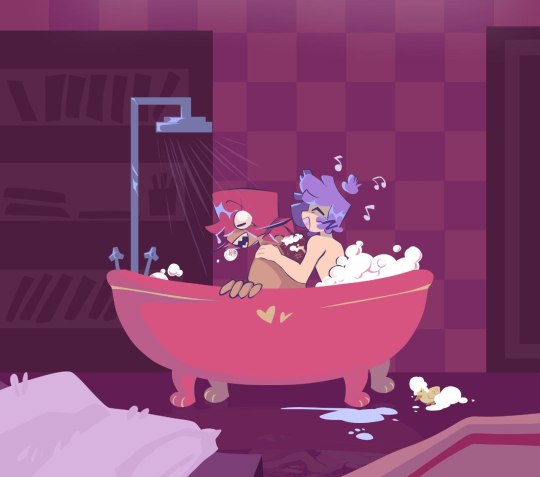



Kratky and Yoshka
Порисульки
60 notes
·
View notes
Text
Tfw nemuzete sehnat ten spravny samet na krojovy ziwotek

0 notes
Text
Vertical Hydroponic Growing with the Lettuce Grow Farmstand: My Experience So Far
Back in July, I decided to jump into vertical hydroponics and got my hands on the Lettuce Grow Farmstand. I found it on OfferUp for an amazing deal, and I couldn’t be happier with how it’s been working out. This thing has truly transformed how I grow my veggies.
For those not familiar, the Farmstand is a modular grow tower that allows you to expand your plant capacity from 18 to 36 slots, depending on your household’s needs and cooking frequency. It’s designed to be easy to use, and let me tell you—it is! It’s basically a “set it and forget it” kind of system. Once you set it up, all you need to do is add nutrients as required, and the tower does the rest. I’ve already harvested three times since July, and I’m still blown away by how efficient this system is.
Leafy greens like lettuce and spinach have thrived the most—growing fast and providing multiple harvests. I even tried a cucumber plant, which was a fun experiment. Although it produced cucumbers, the vines ended up trailing onto the ground, so that’s something to keep in mind if you try growing heavier or more vine-prone plants.
Right now, I’ve got tamarillo, pink amaranth, Brussels sprouts, and cauliflower growing in the Farmstand, and it looks fantastic. The tower is definitely an eye-catcher once everything starts filling in. It’s been a hit with neighbors and friends, who are always asking me about it!
One of the best things about the Farmstand is how easy it is to clean and maintain. The design is simple yet effective, and I love that it’s modular—so if I ever need more space, I can easily expand. The company also offers LED Glow Rings for indoor growing, which is great for when the weather turns cold. However, I’ve been toying with the idea of making my own indoor lighting system to avoid buying their LED setup.
I’m currently working on a 3D-printed mount for LED strip grow lights that will fit around the tower, giving me full control over the lighting without the extra expense. It’s a work in progress, but I’m excited about how it will turn out and will definitely update you once I get it dialed in.
For anyone considering vertical hydroponics, I highly recommend the Lettuce Grow Farmstand. It’s a breeze to use, looks great in the garden, and delivers a continuous supply of fresh produce. Plus, it’s got me thinking creatively about how to grow indoors—without missing a beat during the colder months.
Stay tuned for more updates on my indoor growing project!
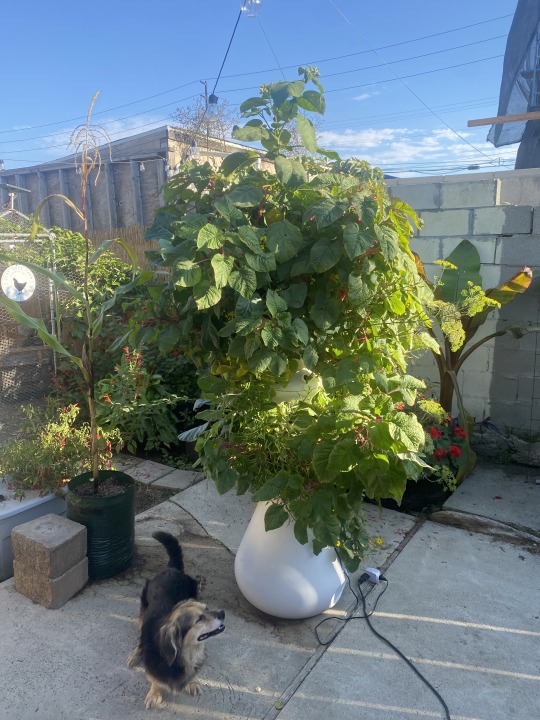

#gardening#growing#containergrowing#hydroponics#backyard chickens#kratky#girl dad#growth#chickenmath#lettuce#lettuce grow#farmstand
3 notes
·
View notes
Text
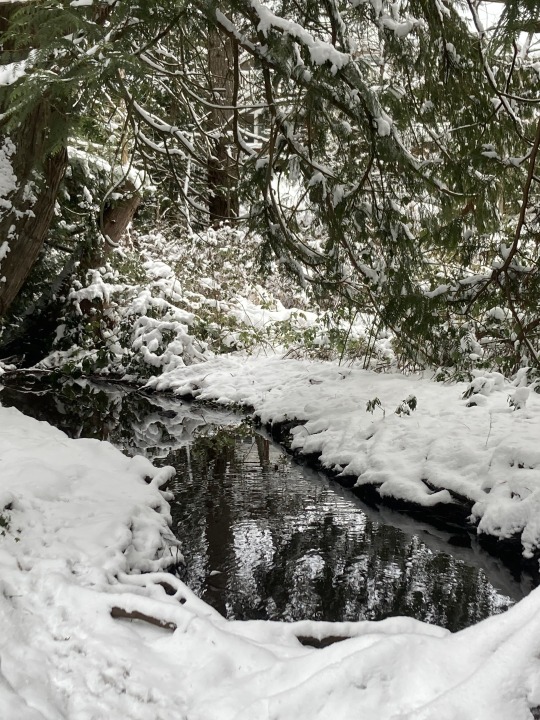
It's cold outside but it's spring in here.

Just under 30 days from seed to plant. Planning bok choi for dinner tomorrow.
0 notes

